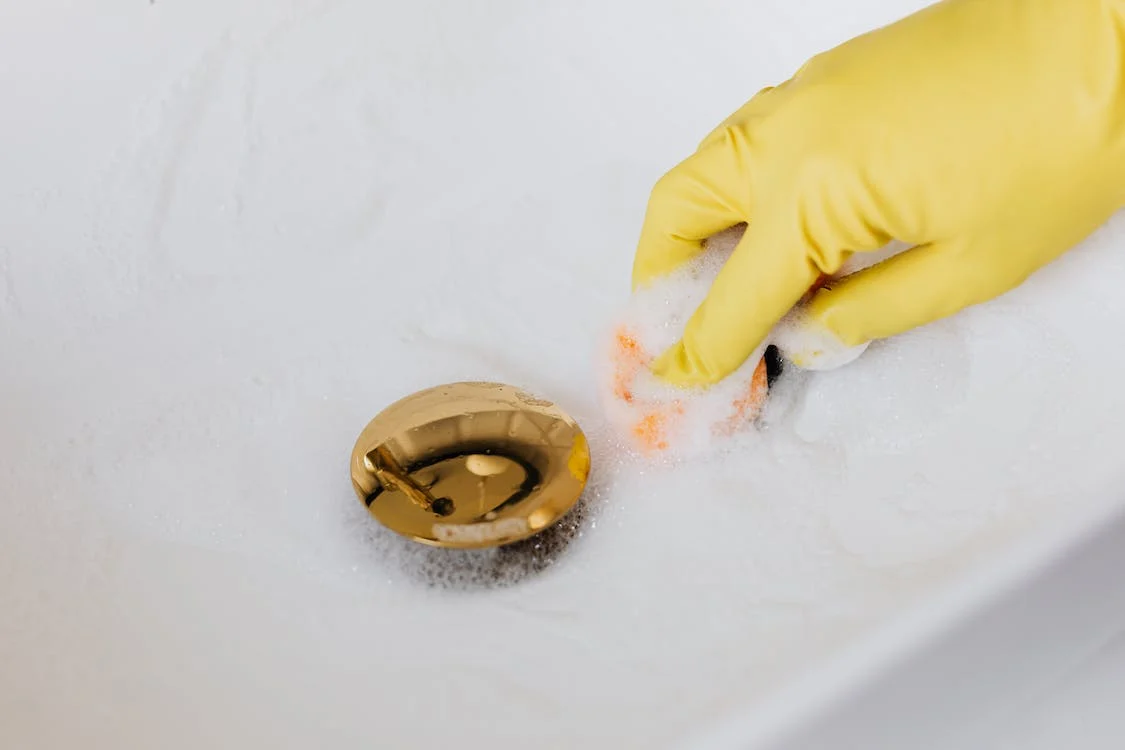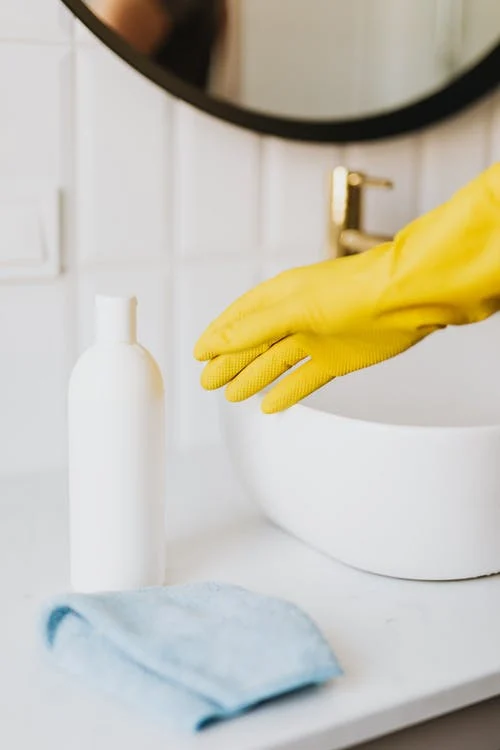The prospect of taking a bath in a filthy tub is unappealing to absolutely no one. Mold and bacteria can grow on the walls of your bathtub if they are constantly exposed to moisture. This can result in a mess that is not only unpleasant to look at but also unhealthy. The best way to prevent dirt and gunk from getting out of hand in your bathtub is to keep it clean on a consistent basis, but there will be times when you need to pull out the big guns in order to chip away at heavy stains that have become embedded in the surface. Fortunately, this can typically be accomplished with the aid of a few common household items and a little bit of effort on the part of the person doing the work. Read on some tips in maintaining a clean tub:
Determine the Material That Your Bathtub Is Made Of
Acrylic, fiberglass, porcelain, and enameled metal are the four most typical materials used to construct bathtubs. These materials can be difficult to differentiate from one another; however, the following are some straightforward tests:
- Both acrylic and fiberglass are characterized by a certain degree of pliability. If you knock on the side of the tub and listen carefully, you should hear a hollow sound. If the material appears to have some give to it, you can safely assume that you are dealing with acrylic or fiberglass. It is possible that you are dealing with porcelain or enameled metal if the material does not give when you press on it and you hear a thud. If you believe the object to be porcelain or enameled metal, proceed directly to step 3.
- While both fiberglass and acrylic are susceptible to scratches and chips, fiberglass is more likely to be the material you are looking at if there are faded spots on the bottom of the tub. In addition, because fiberglass is a porous material and acrylic is a non-porous material, fiberglass will absorb water and turn yellow over time, whereas acrylic will not.
- When you have narrowed your choice of bathtub down to either porcelain or enameled metal, it is time to remove a magnet from the refrigerator in the kitchen. If the magnet is able to adhere to the surface of your bathtub, the material is enameled metal. Porcelain will not attract the magnet in any way.
The Step-by-Step Guide to Eliminating Black Marks from Your Tub
The removal of black stains, also known as mold stains, is notoriously challenging. The elimination of black mold stains, on the other hand, is not an impossible task. Although it may take some time and effort, you will soon be able to return your bathtub to its pristine condition and bring out its brilliant shine.
Make sure that the type of black mold that you are battling is not the type of black mold that is known to cause illness or death before you begin any kind of work to remove black stains. Toxic black mold, also known as Stachybotrys chartarum, is most commonly found on cellulose-rich surfaces, such as cotton and wood. If the black mold appeared all of a sudden after being exposed to moisture for an extended period of time, it is best to test for Stachybotrys chartarum.
If you want to get rid of black mold, you should grab some bleach and baking soda, which together form a potent solution that kills mold and gets rid of stains. The two ingredients can be combined into a paste or a liquid spray, which should then be liberally applied to the grout in your bathtub and the tile in the surrounding area. It is important to remember to apply a substantial amount to the shower head, drain, and faucet.
If the stain is light, let the solution sit for 10 minutes; if the stain is more stubborn, let it sit for up to 30 minutes. Clean the bathtub with water and pat it dry with a fresh towel.
When working with bleach, it’s important to protect your skin, eyes, and lungs by donning protective gear like gloves and a mask. During the time that the solution is sitting, you should avoid going into the bathroom to avoid breathing in any bleach vapors.
Cleaning and Maintaining Your Bathtub: Advice and Guidelines
In most cases, bathtubs require little in the way of upkeep. You can give your bathtub the appearance of timeless elegance with just a little bit of cleaning and the appropriate level of sanitation.
- Always give your bathtub a good scrubbing after you get out of the shower or bath. Stains occur when residue is left to sit and discolor surfaces. Stains can be avoided to some extent by rinsing thoroughly after each bath, particularly after using colored bath soaks.
- If you have ongoing issues with stains caused by hard water, consider installing a water softener. Installing a water softener will allow you to remove hard minerals from your water before it is dispensed from your tap.
- Dry your bathtub thoroughly after each use in order to prevent the growth of mold and mildew, you should thoroughly dry your bathtub after each use. This is especially important for porous surfaces such as grout and wooden fixtures.
- Keep a regular cleaning schedule. Make a plan to clean your bathtub once a week to prevent dirt, dust, and mold from accumulating in the crevices and fissures of the surface.
- When cleaning your acrylic bathtub, make sure to use only solutions that are designed for that particular material. Make use of scrubs and solutions that are not abrasive. Got an enamel bathtub? Utilize cleaners that won’t corrode the surface.
- Do not use body scrubs that contain particles that are insoluble in water. Body scrubs that contain particles that are insoluble in water, such as coffee grounds and plastic pellets, can clog your pipes and result in costly repairs that require the assistance of a trained professional. Additionally, they have the potential to initiate the growth of mold colonies in your drain. Choose instead natural scrubs that are made with sugar or salt because these ingredients dissolve quickly in water.
To sum it up
Since black mold is known to be hazardous to one’s health, it is important to eradicate it as soon as possible. What’s the upbeat report? In other words, removal of it is a simple process. Scrubbing is not necessary in order to remove mold from the caulk around your bathtub. In point of fact!
Simply soak cotton balls, cloth strips, or cotton coils (used for perms) in bleach water, then apply the solution around the edge of the bathtub and allow it to sit there overnight. It would be wise to wear gloves in this situation. When you wake up, the mold in your bathtub will be gone, and you won’t have to worry about anyone getting sick as a result of your actions. It defies explanation and is nothing short of miraculous.




